100 x 100 Paper Weavings
I launched my 100 x 100 Paper Weavings project yesterday, and I’ll be creating a small paper weaving each day for the next 99 days. You can read more about my thinking behind the project here and sign up to receive my blog updates by entering your e-mail in the subscribe box at the right. Today is Day 2.
#1
This magazine was laying on our table, and I noticed that the publication date was September 23, 2013, the start date for the project. The significance of this date is that 100 days from it marks the end of 2013, so it’s a count down to the end of 2013 as well!
One of my goals with this project is to write about some of the amazing papers that are out there, and my plan is to feature a unique paper, papermaker, paper store or paper technique in each of the weavings.
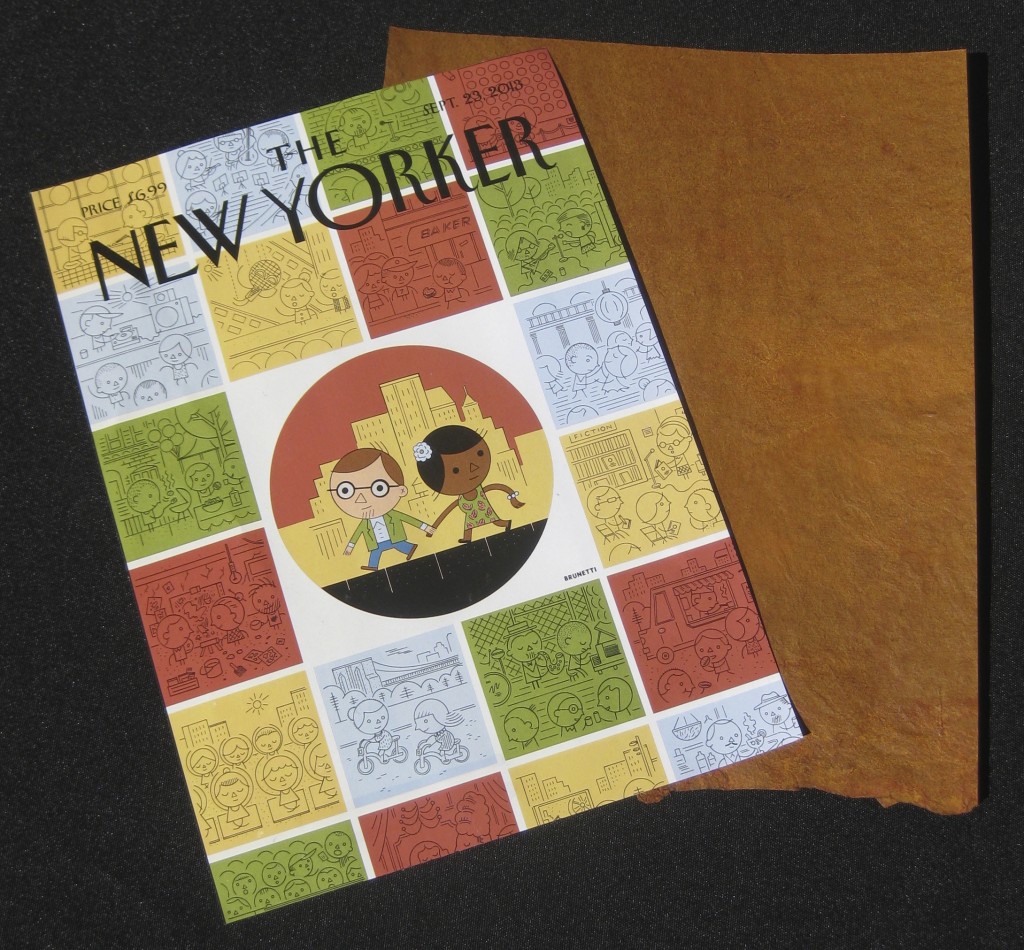
I paired this New Yorker cover with a Hark! Handmade Paper. This company produces small editions of high quality flax/linen/abaca papers, often commissioned for specific projects. The papers are externally coated with saturated color, followed by a patina of walnut dye, and finally a heavy coat of gelatin size. They are sturdy, come in a variety of colors and look a bit like leather.
Do you notice something distinctive about the paper that tells you it is handmade? Leave your comment below to be entered in a drawing (see details at the bottom of this post).
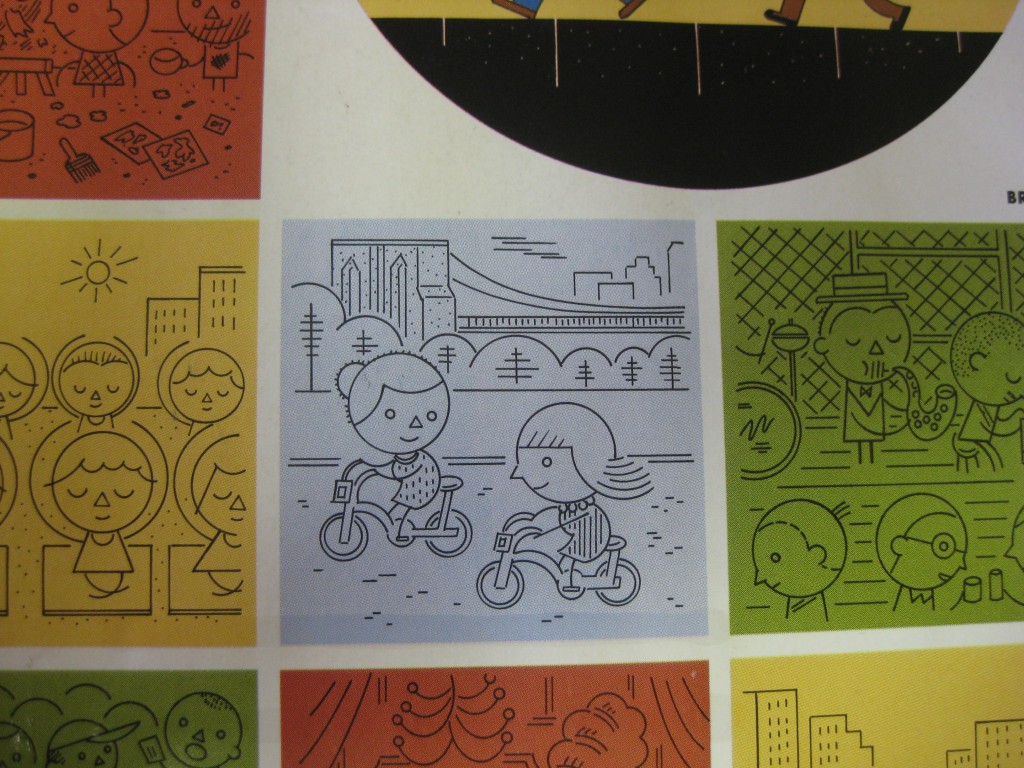
I chose this magazine cover for several reasons: I lived in NYC for 11 years and had many adventures with young men, including the one who became my husband (and worked at the New Yorker)! I also rode my bike all around the city and over the Brooklyn Bridge hundreds of times (there it is in the picture!). Click here to flip through each of the illustrations by Ivan Brunetti and read a description about each scene.
#2
I’m enjoying looking through all of the papers in my flat files. This is a weaving of two sheets of my own pigmented abaca paper. Abaca is an incredibly strong and translucent fiber found in the trunk and leaf stalks of a non-fruitbearing banana plant that grows primarily in the Philippines. It is used in the manufacture of tea bags. I’m not sure what possessed me to make this garish yellow paper, but I find that it works really well with the blue.
This piece contains an added dimension. Can you see what I’ve done? What do you think the other side of the paper looks like (hint, I did not do anything extra on the back).
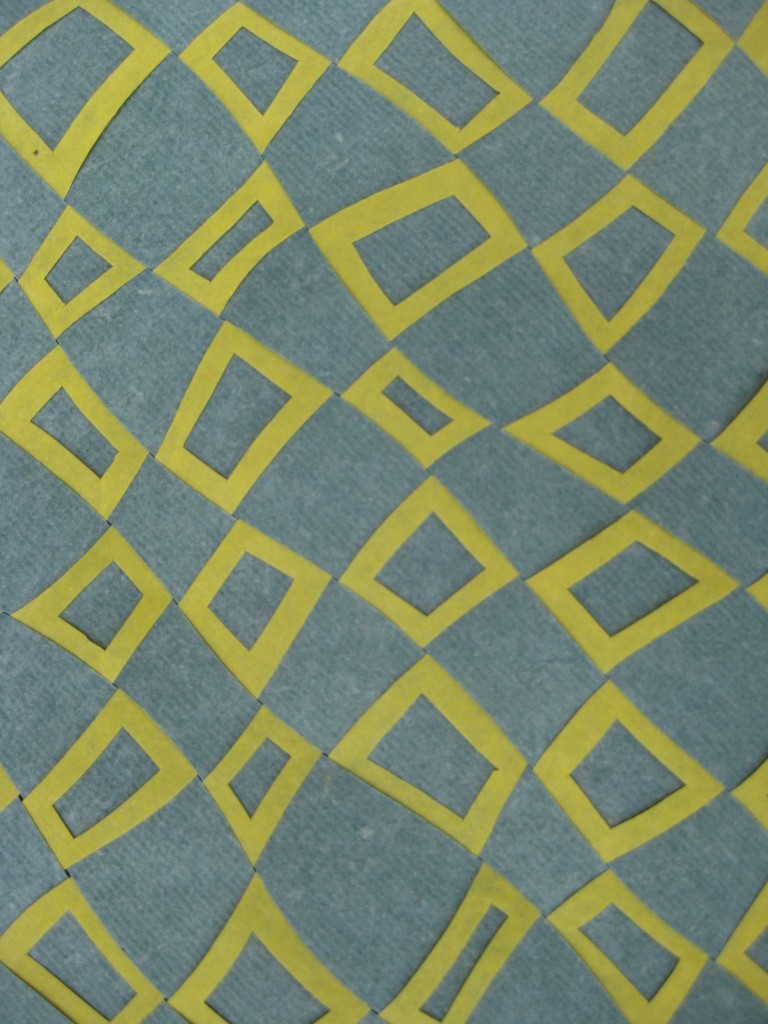

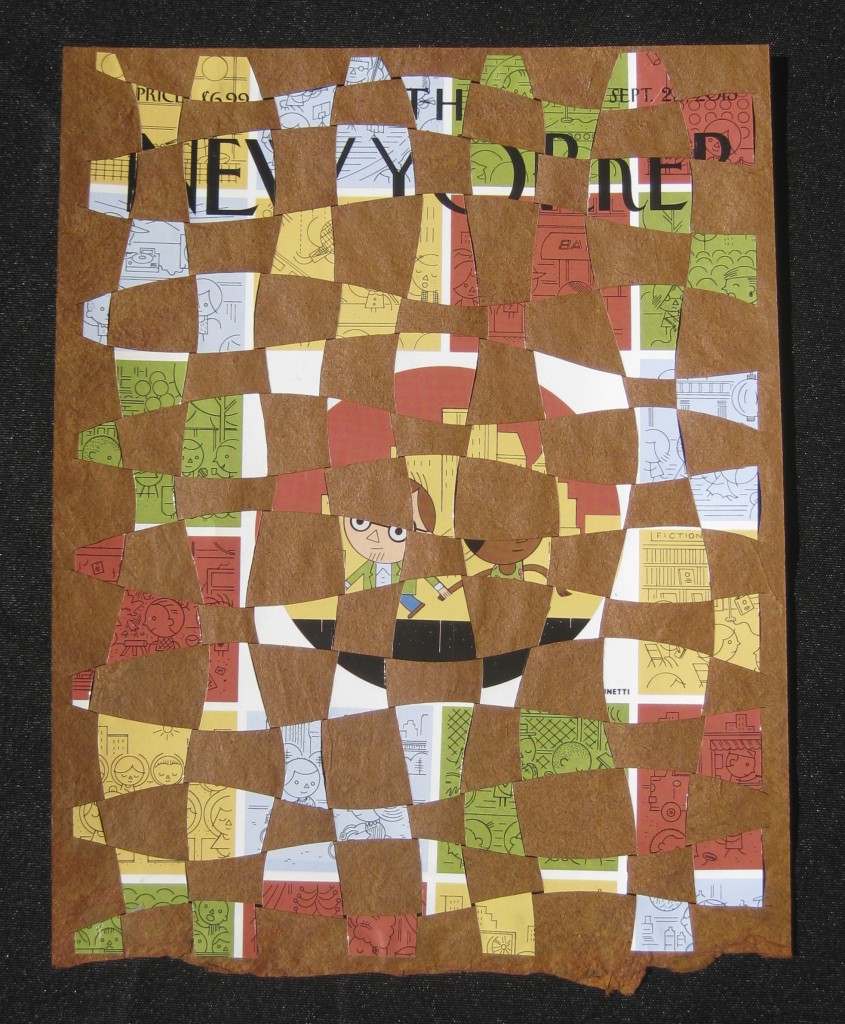
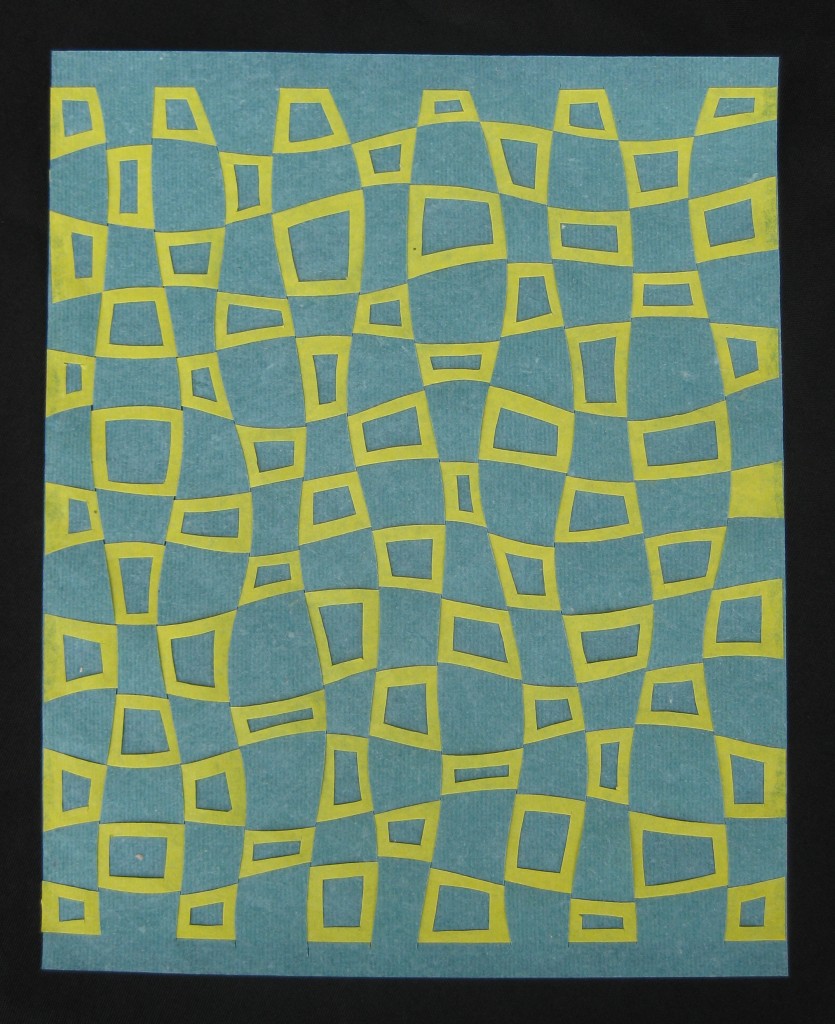
21 Comments
The HARK paper has a deckled edge and is not perfectly rectangular.
I think the other side of the paper would look snake-skin-y.
I love the idea of this project
Hi Penney, hmmm, snake skinny. I like that!
#1 The handmade paper has an uneven edge.
#2 The colors other side of the weaving are probably the opposite of what is pictured.
Patty, that’s called the deckle edge. The other side could be the opposite, but I didn’t bother cutting out all of the little squares. Thanks for following and commenting!
It looks to me that you wove the yellow strips, then removed a section from each visable portion. The reverse side wouldn’t show the ‘windows’ that were cut on the front, so it would have solid yellow sections against the blue background.
Great answer, Mary Ellen. Thanks for following my posts!
1. The texture and the decked edge on the bottom.
2. I think the yellow sections on the back are solid. I think you cut squares out of the ones on the front.
Nice, Ellen. I’ll try to remember to post an image of the back side.
The blue squares are cut out of the yellow paper. The back looks like the opposite of the woven pieces, without the cut-out squares!
Right-o Erin. Thanks for following me.
Nice work–inspirational in fact!
I think you cut windows in the yellow paper which was woven into the blue paper, mimicking the shape of the wavy yelllow rectangle, thus exposing more of the blue below.
I hope I win!
Thank you so much for your posts. I look forward to them.
Janet Osborn
Ann Arbor, Michigan
Thanks, Janet. Great answer; you’re right!
Janet got it right, I believe. You cut rectangles into the yellow paper so that the blue paper looks through like little windows. Since one can’t see those windows at the back it is just a negative form without yellow windows. Would look nice if you had cut rectangles into the blue paper though 😉
Hi Dagmar, there are endless possibilities; perhaps I’ll do some comparison pieces since I have 100 days!
I love the texture of this paper. It makes me want to caress it. I think it shows that it’s handmade because of the uneven dying (which makes it more interesting) and because of it’s uneven edge.
Great answers Mary. Thanks for following my posts.
Your handmade (and yummy) paper has a deckle edge and the reverse of the blue and yellow weaving is solid yellow against the blue? Maybe?
You got it, Pat!
Well I was going to guess that the yellow strips had slits cut in them and a small piece of the gray paper woven through, but I see it’s actually just windows cut in the yellow. 🙂
I love creativity challenges like this! Looking forward to keeping track of you and your journey.
I can see the texture in the paper; that suggests to me that it is handmade.
These are beautiful and I love how you do a new one each day. I am making a paper quilt and would love to be in touch with others who are interested in this art form. Wyn Flo